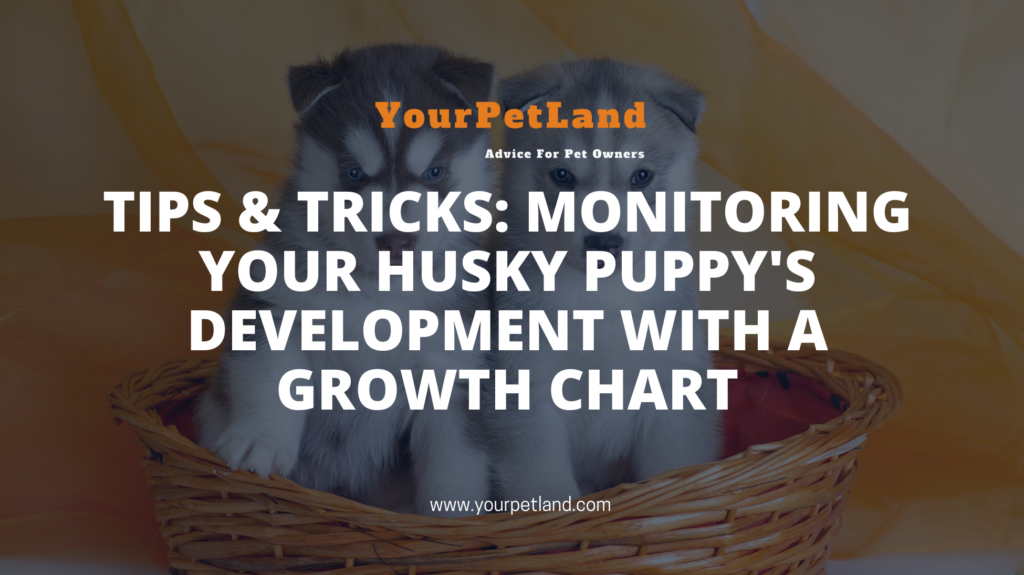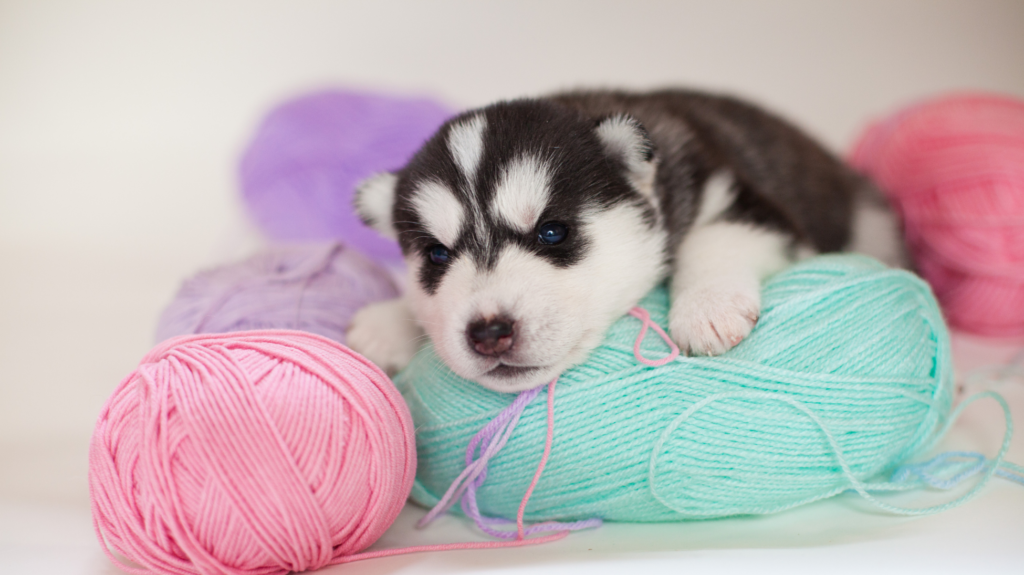Tips & Tricks: Monitoring Your Husky Puppy’s Development with a Growth Chart
When you welcome a Husky puppy into your life, one of the most important aspects of responsible pet parenting is monitoring their growth and development. A growth chart can be an invaluable tool to help you track your puppy’s progress and ensure they are thriving. In this guide, we’ll explore tips and tricks for effectively using a growth chart to monitor your Husky puppy’s development.
Why Use a Growth Chart for Your Husky Puppy
Understanding the significance of using a growth chart is the first step in effective monitoring. Here are several reasons why it’s crucial:
- Health Assessment: A growth chart allows you to assess your puppy’s overall health. Deviations from the expected growth pattern can signal potential health issues that need attention.
- Nutrition Management: Monitoring your Husky puppy’s growth helps you adjust their diet appropriately. Ensuring they receive the right nutrients at each stage is essential for their well-being.
- Weight Management: It helps you prevent overfeeding or underfeeding, which can lead to obesity or malnutrition. Maintaining a healthy weight is vital for your puppy’s long-term health.
- Behavioral Insights: Tracking your puppy’s growth allows you to understand the stages of development they are going through, helping you tailor training and socialization efforts accordingly.
- Breeding Considerations: For breeders, growth charts are essential in evaluating the health and development of puppies in a litter, making informed decisions about breeding practices.
Understanding a Husky Puppy’s Growth Stages
Huskies typically follow a standard growth pattern, but individual variation can occur. Here are the key stages in a Husky puppy’s development:
Neonatal Stage (0-2 Weeks):
- Puppies are born blind, deaf, and completely dependent on their mother.
- Weight gain is rapid, with puppies doubling their birth weight by the end of this stage.
| Age (Days) | Weight (oz) |
| 1 | 7-14 |
| 7 | 14-24 |
| 14 | 28-48 |
Transitional Stage (2-4 Weeks):
- Eyes and ears begin to open, and puppies start to explore their surroundings.
- Gradual introduction to solid food begins, alongside nursing.
| Age (Days) | Weight (oz) |
| 21 | 48-84 |
| 28 | 80-140 |
Socialization Stage (4-12 Weeks):
- Puppies become more interactive and develop social skills.
- Vaccinations and deworming commence.
| Age (Weeks) | Weight (lbs) |
| 4 | 5-10 |
| 8 | 10-20 |
| 12 | 15-30 |
Juvenile Stage (3-6 Months):
- Permanent teeth emerge, and puppy behaviors like chewing intensify.
- Formal training and obedience classes can begin.
| Age (Months) | Weight (lbs) |
| 3 | 20-35 |
| 6 | 30-50 |
Adolescence (6-12 Months):
- Huskies reach their full height during this stage, although they may continue to fill out.
- Continue obedience training to manage their energy and independence.
| Age (Months) | Height (inches) |
| 6 | 18-22 |
| 12 | 20-24 |
Tips and Tricks for Using a Growth Chart
Now that you understand the growth stages, here are some practical tips for effectively using a growth chart:
- Consistent Measurement: Weigh and measure your Husky puppy at the same time of day and under the same conditions for accurate tracking.
- Nutrition Adjustment: Adjust your puppy’s diet according to their growth stage, consulting with your veterinarian for guidance on appropriate nutrition.
- Exercise and Activity: Adapt exercise routines to your puppy’s age and energy level. Avoid overexertion during rapid growth stages.
- Health Checks: Regular veterinary check-ups are crucial for monitoring your puppy’s overall health and detecting any issues early on.
- Training and Socialization: Tailor your training and socialization efforts to match your puppy’s developmental stage and behavior.
Common Growth Concerns
While Huskies generally follow a predictable growth pattern, some common concerns may arise:
- Slow Growth: If your Husky puppy’s growth deviates significantly from the expected pattern, consult your veterinarian to rule out underlying health issues.
- Overfeeding: Overfeeding can lead to excessive weight gain, which is harmful to growing puppies. Follow a balanced diet to avoid obesity.
- Underweight: If your puppy is consistently underweight, seek advice from your vet to ensure proper nutrition and health.
Conclusion
Monitoring your Husky puppy’s development with a growth chart is a proactive way to ensure their health and well-being. By understanding the significance of using a growth chart, the key growth stages, and implementing practical tips and tricks, you
Unlock Your Husky’s Potential with YourPetLand!
Ready to embark on a journey of responsible Husky puppy parenting? YourPetLand offers a wealth of resources, expert guidance, and a supportive community of fellow Husky enthusiasts. From growth tracking to nutrition advice and training strategies, we’ve got you covered. Join us today and provide your Husky with the best care possible.


